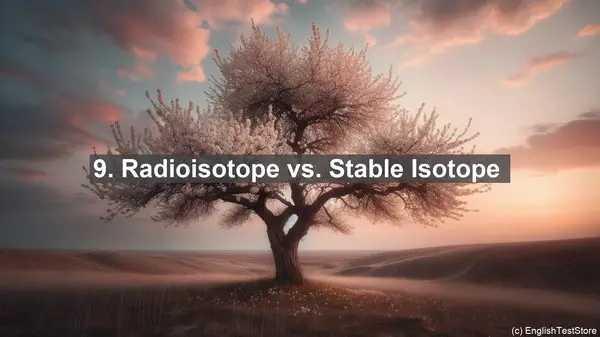Introduction
Welcome to today’s lesson. In the field of radiochemistry, there are several words that often cause confusion. Understanding these words is crucial for a strong foundation in the subject. So, let’s dive in and explore the top 10 commonly confused words in radiochemistry.
1. Decay vs. Transmutation
Decay and transmutation are two processes that occur in radiochemistry, but they are not the same. Decay refers to the spontaneous breakdown of a radioactive atom, resulting in the emission of radiation. On the other hand, transmutation involves the conversion of one element into another through nuclear reactions. While both processes involve changes in the atomic structure, they differ in their underlying mechanisms.
2. Half-life vs. Lifetime
Half-life and lifetime are often used interchangeably, but they have distinct meanings. Half-life refers to the time it takes for half of the radioactive atoms in a sample to decay. It is a measure of the stability of a radioactive substance. Lifetime, on the other hand, refers to the average time a radioactive atom exists before decaying. It provides insights into the overall stability of a radioactive material.

3. Isotope vs. Nuclide
Isotope and nuclide are terms used to describe different aspects of an atom. Isotope refers to atoms of the same element that have the same number of protons but different numbers of neutrons. They have similar chemical properties but differ in their atomic mass. Nuclide, on the other hand, refers to a specific atomic species characterized by its atomic number and mass number. It includes all isotopes of an element.
4. Alpha vs. Beta Decay
Alpha and beta decay are two types of radioactive decay. Alpha decay involves the emission of an alpha particle, which consists of two protons and two neutrons. It results in the atom’s atomic number decreasing by 2 and the mass number decreasing by 4. Beta decay, on the other hand, involves the emission of a beta particle, which can be either an electron or a positron. It leads to a change in the atomic number while the mass number remains the same.
5. Fission vs. Fusion
Fission and fusion are nuclear reactions that release a significant amount of energy. Fission involves the splitting of a heavy nucleus into two or more lighter nuclei. This process is accompanied by the release of a large amount of energy. Fusion, on the other hand, involves the merging of two light nuclei to form a heavier nucleus. It is the process that powers the sun and other stars. Both fission and fusion have immense applications in various fields.
6. Radioactive vs. Radiogenic
Radioactive and radiogenic are terms used to describe the origin of isotopes. Radioactive isotopes are those that undergo radioactive decay, emitting radiation in the process. They are often used in medical imaging and cancer treatment. Radiogenic isotopes, on the other hand, are formed through the decay of radioactive isotopes. They are used in geochronology and provide insights into the Earth’s history.
7. Radioactivity vs. Radiation
Radioactivity and radiation are related but distinct concepts. Radioactivity refers to the property of certain isotopes to undergo spontaneous decay, emitting radiation. Radiation, on the other hand, refers to the emission of energy in the form of particles or electromagnetic waves. It can come from various sources, including radioactive materials, the sun, and even man-made devices.
8. Emission vs. Absorption
Emission and absorption are processes that involve the interaction of radiation with matter. Emission refers to the release of radiation from a source. It can be in the form of alpha, beta, or gamma particles. Absorption, on the other hand, refers to the capture of radiation by a material. Different materials have varying abilities to absorb radiation, which is the basis for various shielding techniques.

9. Radioisotope vs. Stable Isotope
Radioisotopes and stable isotopes are two categories of isotopes. Radioisotopes are those that are unstable and undergo radioactive decay. They are often used in medical and industrial applications. Stable isotopes, on the other hand, are those that do not undergo radioactive decay. They have a constant atomic mass and are commonly found in nature.
10. Contamination vs. Irradiation
Contamination and irradiation are two types of exposure to radiation. Contamination refers to the presence of radioactive material on a surface or object. It can occur through direct contact or airborne particles. Irradiation, on the other hand, refers to the exposure to radiation without direct contact with a radioactive source. It can occur through the environment or medical procedures.
